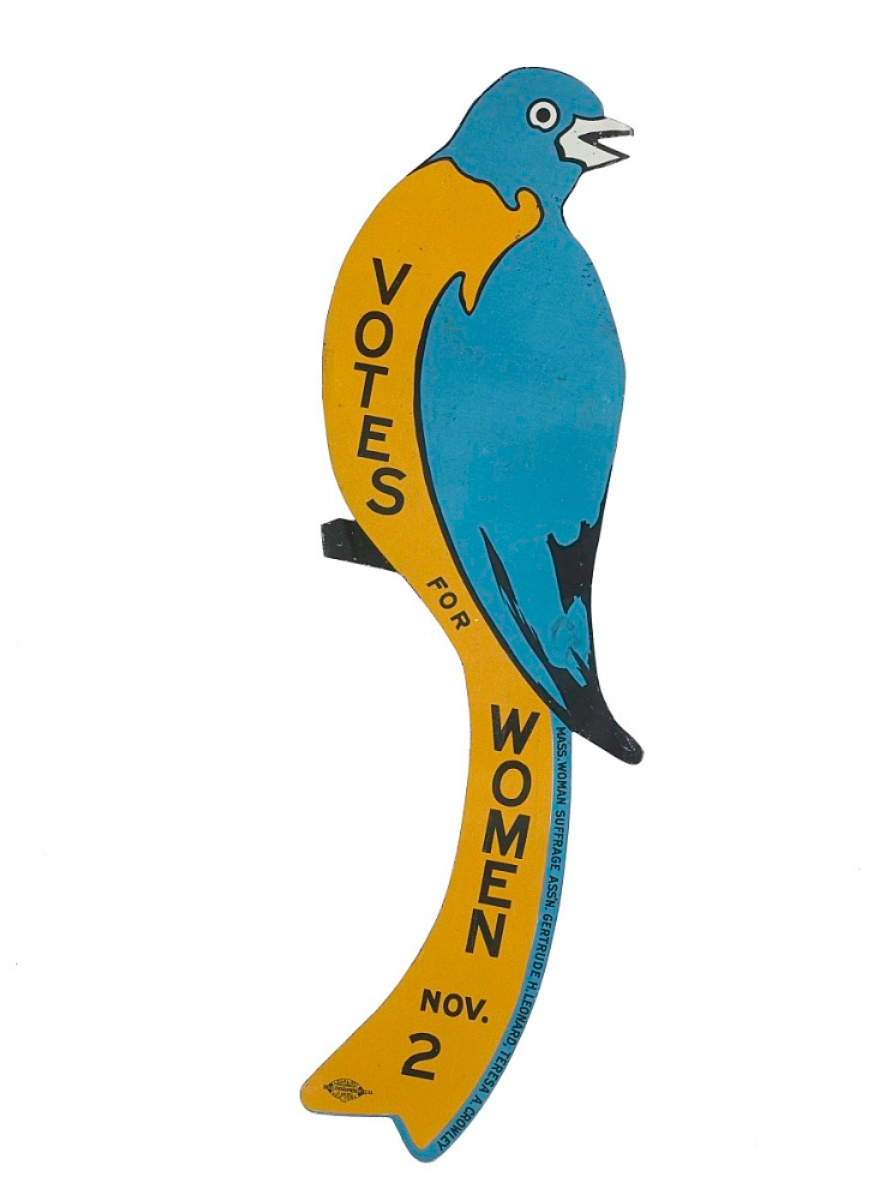Teach This Poem, though developed with a classroom in mind, can be easily adapted for remote-learning, hybrid-learning models, or in-person classes. Please see our suggestions for how to adapt this lesson for remote or blended learning. We have also noted suggestions when applicable and will continue to add to these suggestions online.

Look closely at the image of a tin bluebird.
The following activities and questions are designed to help your students use their noticing skills to move through the poem and develop their thinking about its meaning with confidence, using what they’ve noticed as evidence for their interpretations. Read more about the framework upon which these activities are based.
- Warm-up: Look closely at the image of a tin bluebird. What do you notice? Look again. What else do you see? What does this make you think?
- Before Reading the Poem: (think-pair-share) Read the 19th Amendment. What does this mean? What does it make you think? What questions does it bring up?
- Reading the Poem: Silently read the poem “What It Must Have Felt Like” by Ada Limón. What do you notice about the poem? Note any words or phrases that stand out to you or any questions you might have.
- Listening to the Poem (enlist two volunteers to read the poem aloud): Listen as the poem is read aloud twice, and write down any additional words and phrases that stand out to you.
- Small-group Discussion: Share what you noticed about the poem with a small group of students. What do you think about the title of the poem, “What Must It Have Felt Like?” What might the title have to do with the 19th Amendment and the bluebird?
- Whole-class Discussion: How would you describe the speaker in this poem? Why? What is the connection between these lines: “What chaos could ensue / should a wing get loose?” and “What cannot be contained / cannot be contained?”
- Extension for Grades 7-8: The New York Philharmonic celebrates the 19th Amendment with Project 19. Read poetry from the project. Continue reading more about the Women’s Suffrage Movement. Write your own creative piece that explores what it means to be contained or not contained. Be sure to share your creation with your classmates.
- Extension for Grades 9-12: Continue learning about the 19th Amendment by reading the article “100 Years With the 19th Amendment.” Then, research a historical figure or voting rights activist who has impacted voting in the United States. Share your research with the class.
March is Women’s History Month, a time for us to celebrate the lives and accomplishments of extraordinary, influential women. To celebrate Women’s History Month—and women in poetry year-round—browse this selection of teaching resources featuring poems by Lucille Clifton, Emma Lazarus, and Adrienne Rich, among others.
